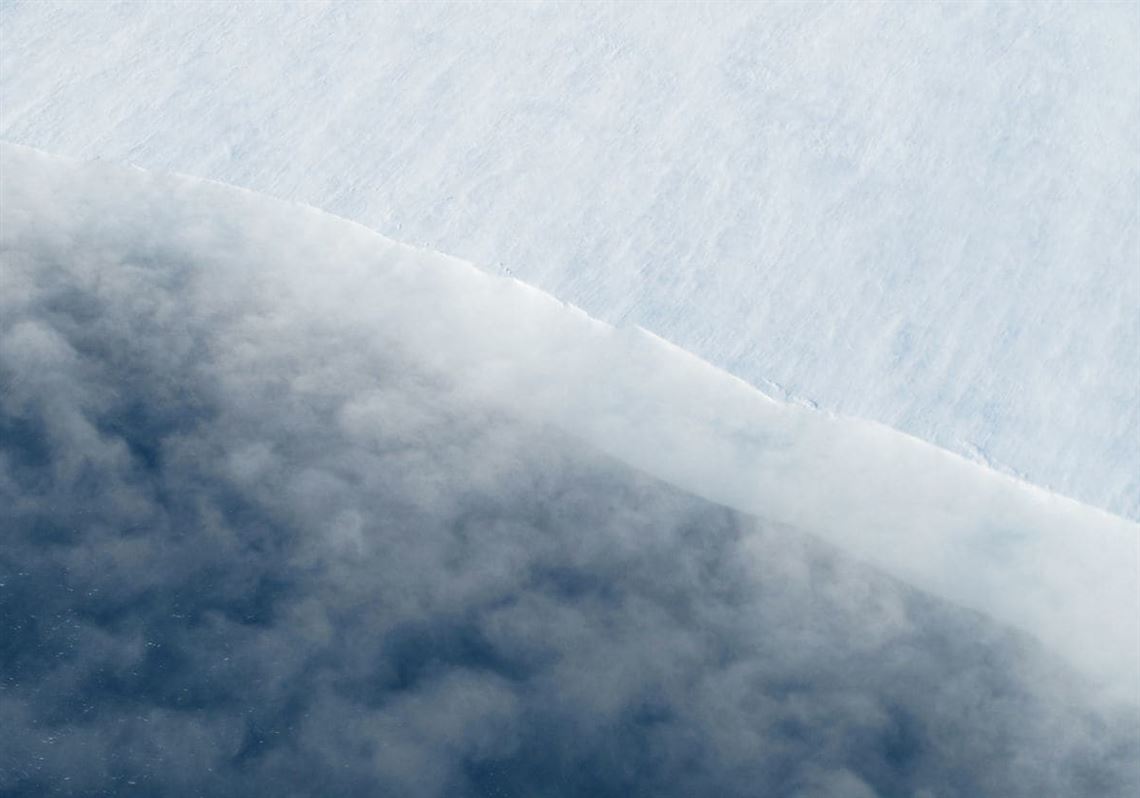Scientists this winter began a race against time to better understand a massive, and unstable, glacier that could change the world’s coastlines within decades.
An international group of researchers launched a five-year, roughly $50 million project to study Thwaites Glacier, a remote, and notoriously foul-weathered, glacier in the middle of West Antarctica.
“It’s about the size of the island of Great Britain,” said Ted Scambos, a University of Colorado scientist and co-leader of the International Thwaites Glacier Collaboration.
“That’s a huge area. When you add something like a half a mile to a mile of ice over all of that … that’s what we’re going to pick up and put into the ocean.”
And because of the nature of the bedrock underneath it, if Thwaites starts to collapse, it could go fast, contributing roughly 2 feet of global sea level rise in as little as 50 years, Mr. Scambos said.
“That’s the problem. Having sea level rise is not nearly as big an issue as having it rise rapidly, faster than we’re able to react or plan or build,” Mr. Scambos said. “And so, that’s why Thwaites becomes really important because it could be a real, turbo-charging effect for how fast sea level rises around the world.”
The ultimate goal of the Thwaites project, which Mr. Scambos has been championing for years, is to develop more accurate global sea level rise models so coastal residents and governments have enough time to plan for future changes.
In cities like Miami, perhaps the American city most vulnerable to sea level rise, infrastructure decisions are made as early as 50 years out.
“Ultimately, the challenge is to understand the melting of the Antarctic ice so that we can better predict sea level rise over the next few decades and century,” said Karen Heywood, an oceanographer at the University of East Anglia involved with the research.
A ‘phenomenal effort’
The research is being funded by the US and Britain’s government scientific agencies, and over the next five years, eight teams of researchers, each led by one British and one American scientist, will try to answer key questions about the glacier. They include how much changing ocean circulation patterns and warming temperatures are melting the underside of the glacier; how “pinning points,” or ridges in the ocean floor underneath the land-based portion of the glacier will impact its destabilization; and how to forecast or model a potentially rapid collapse at the face of the glacier.
So far this winter, hundreds of thousands of pounds of fuel and equipment have been airlifted to Thwaites in 35 trips by American military transport planes outfitted with skis and delivered by British ships to the floating sea ice on the edge of Antarctica.
“It’s a phenomenal effort on the part of both countries, UK and the US,” Mr. Scambos said.
The supplies will be stored on the ice next winter — Antarctica's summer — when the season on top of the glacier starts in earnest.
Under the ice shelf
But studies at the glacier’s face and the ocean underneath it begin in just a few weeks, aboard a US research vessel with ice-breaking capabilities called the Nathaniel B. Palmer.
Karen Heywood, from the University of East Anglia, is co-leading a project that will focus this season on how much warming ocean water underneath the floating lip of the ice shelf is melting the glacier’s underside. Right now, no one knows exactly how deep the giant, underwater cave underneath the edge of Thwaites is, or what the ocean floor beneath it looks like.
“Under the ice shelf itself, we know almost nothing at the moment,” Ms. Heywood said.
On the research cruise, one of Ms. Heywood’s collaborators, a Swedish researcher named Anna Wahlin, will test a robotic submarine called a HUGIN that will eventually navigate under that floating ice shelf.
“There’s never been any measurements or any instruments sent underneath the Thwaites Glacier ice shelf, and that’s really why it’s so exciting,” Ms. Heywood said.
Ms. Heywood’s team will also be tagging seals with sensors that will collect and transmit temperature and salinity data back to researchers for up to a year.
Another research group, co-led by the University of Houston’s Julia Wellner, will map the ocean floor using sonar technology and collect sediment cores to learn how ice reacted when it met warm water in the past.
“Did it [destabilize], did it take a step back when warm water reached it in the past,” Ms. Wellner said. “Or, was it somehow able to withstand those past warm-water incursions?"
A third research team will visit islands near Thwaites to search for organic material, such as penguin bones and seashells, to better understand historic sea level fluctuations in the area.
Research results are expected to start trickling out before the end of the year.
A ‘lynchpin position’
Those data could help predict the future not just of Thwaites, but of the entire Mexico-sized, West Antarctic Ice Sheet.
“Thwaites is sort of in this lynchpin position,” Mr. Scambos said. “And if we lose Thwaites, it’s sort of like taking the middle out of this ice sheet. And that means that the other areas of the ice sheet are also going to collapse.”
A complete collapse of West Antarctica would push sea levels up 10 to 11 feet, Mr. Scambos said. That would likely take centuries, but it could happen more rapidly.
“The worst case could be 100 years from now, that you would get that much water into the ocean. We don’t have high confidence in that. It could be that we have longer; it could be that we don’t have that long,” said Richard Alley, another collaborator on the project from Penn State University.
“We’re not sure yet what is the ‘black swan,’ the absolute worst thing that could happen at Thwaites,” Mr. Alley said. “We’re really hopeful that this five-year research collaboration will give us a lot of insight into [that].”
Scientists have known how important Thwaites is for years, but “there’s still not as much data on it as we’d like because it is so hard to access, even by Antarctic standards,” Ms. Wellner said.
The novelty of doing research in such a remote location and the urgency of the problem they’re trying to solve makes the research exciting, she said. But it also adds pressure to the 100-plus scientists involved with the project.
“There’s this big push that we need answers soon,” Ms. Wellner said. “There’s not more pressure to get it right than normal, but there’s more pressure to be quick about it.”
First Published: January 27, 2019, 10:00 a.m.















